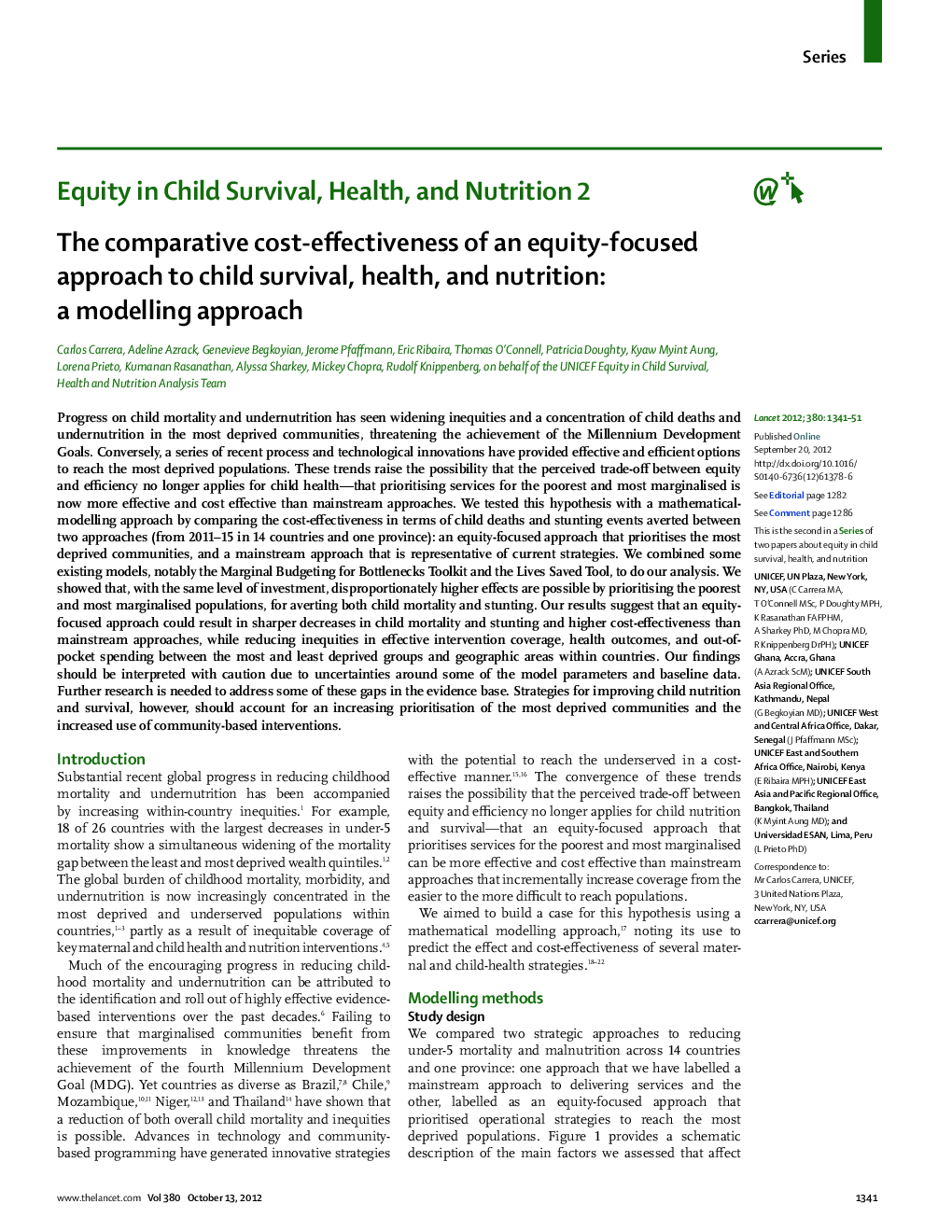| کد مقاله | کد نشریه | سال انتشار | مقاله انگلیسی | نسخه تمام متن |
|---|---|---|---|---|
| 3491493 | 1234159 | 2012 | 11 صفحه PDF | دانلود رایگان |

Progress on child mortality and undernutrition has seen widening inequities and a concentration of child deaths and undernutrition in the most deprived communities, threatening the achievement of the Millennium Development Goals. Conversely, a series of recent process and technological innovations have provided effective and efficient options to reach the most deprived populations. These trends raise the possibility that the perceived trade-off between equity and efficiency no longer applies for child health—that prioritising services for the poorest and most marginalised is now more effective and cost effective than mainstream approaches. We tested this hypothesis with a mathematical-modelling approach by comparing the cost-effectiveness in terms of child deaths and stunting events averted between two approaches (from 2011–15 in 14 countries and one province): an equity-focused approach that prioritises the most deprived communities, and a mainstream approach that is representative of current strategies. We combined some existing models, notably the Marginal Budgeting for Bottlenecks Toolkit and the Lives Saved Tool, to do our analysis. We showed that, with the same level of investment, disproportionately higher effects are possible by prioritising the poorest and most marginalised populations, for averting both child mortality and stunting. Our results suggest that an equity-focused approach could result in sharper decreases in child mortality and stunting and higher cost-effectiveness than mainstream approaches, while reducing inequities in effective intervention coverage, health outcomes, and out-of-pocket spending between the most and least deprived groups and geographic areas within countries. Our findings should be interpreted with caution due to uncertainties around some of the model parameters and baseline data. Further research is needed to address some of these gaps in the evidence base. Strategies for improving child nutrition and survival, however, should account for an increasing prioritisation of the most deprived communities and the increased use of community-based interventions.
Journal: - Volume 380, Issue 9850, 13–19 October 2012, Pages 1341–1351